Could ORNL's supercomputer track how disease-causing proteins act?
A Nobel laureate came to town recently to deliver a lecture and determine whether the world’s fastest supercomputer at Oak Ridge National Laboratory could help him make sense out of the floods of biological data produced by his microscope innovations. He called the data analysis hurdle the “Achilles heel” of advancing cell and molecular biology using the highest-resolution, nanoscale imaging tools he helped make possible.
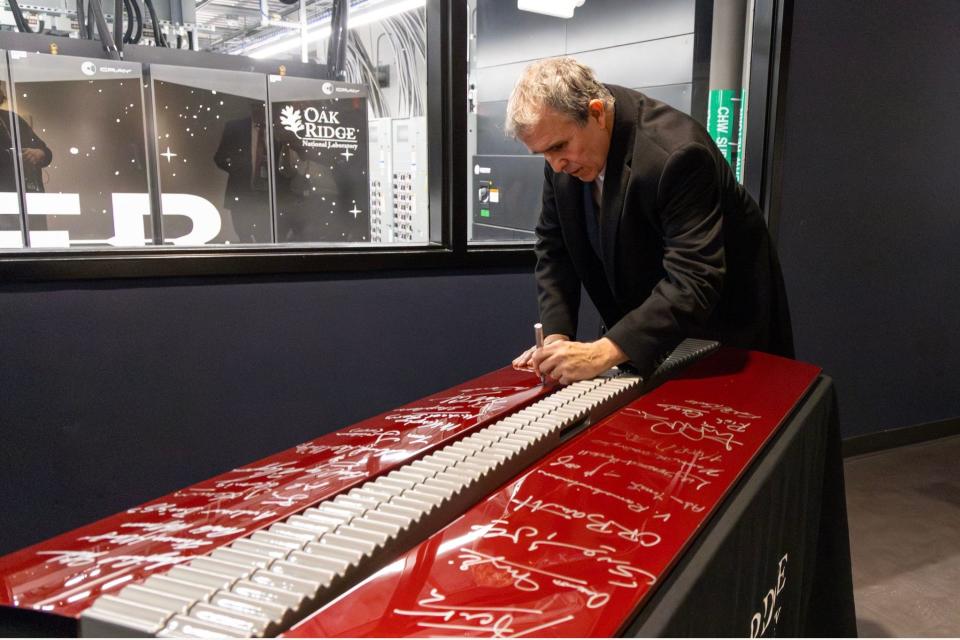
Late last month, Eric Betzig, a co-recipient of the 2014 Nobel Prize in Chemistry for building the first super-resolution single molecule localization microscope, delivered the 2024 S.C. Lind Lecture at ORNL.
Near the end of his talk, he said he was eagerly looking forward to learning that day whether the Frontier supercomputer at ORNL, armed with exascale computing and artificial intelligence tools, could help him interpret faster a million gigabytes a week of video data that enables scientists to visualize at the nanoscale pathways of individual molecules moving inside living cells and to track proteins involved in diseases.
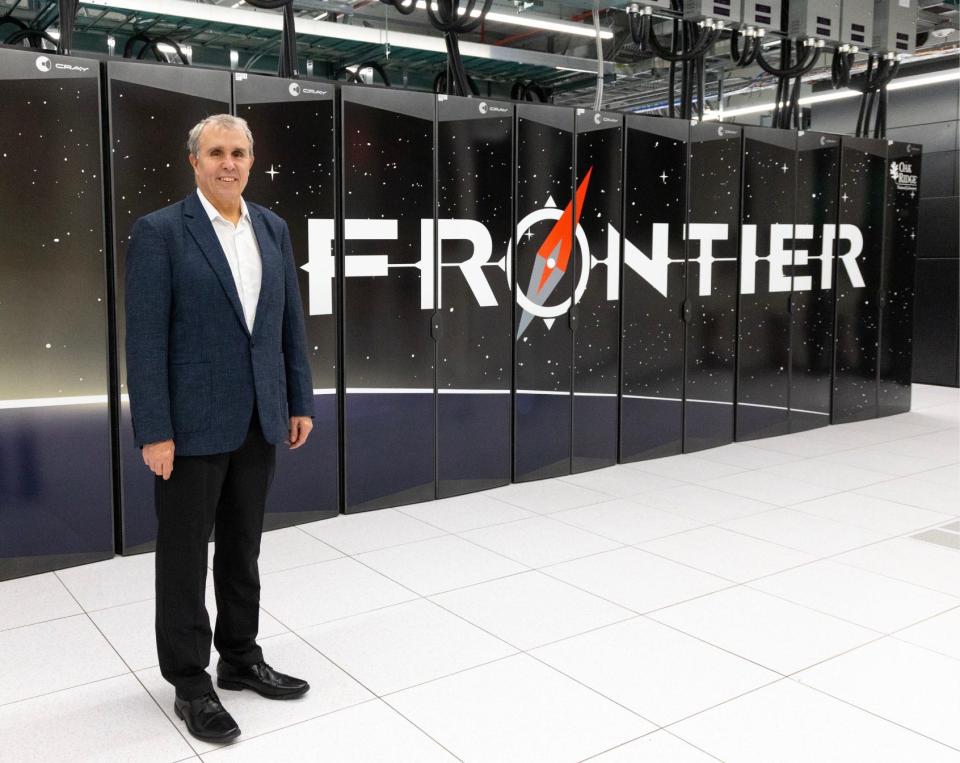
In his presentation, “All Things Great and Small: Historical Connections Between Astronomy and Microscopy,” he conceded that he obtained ideas for advancing microscopy by studying how astronomers improved the resolution of telescopes over 400 years, enough to “see” signs of receding galaxies that indicated the universe is expanding, exoplanets orbiting stars in our Milky Way Galaxy and stars in billions of galaxies much farther away.
“We are much smaller in scale than are galaxies, so we are insignificant,” he commented.
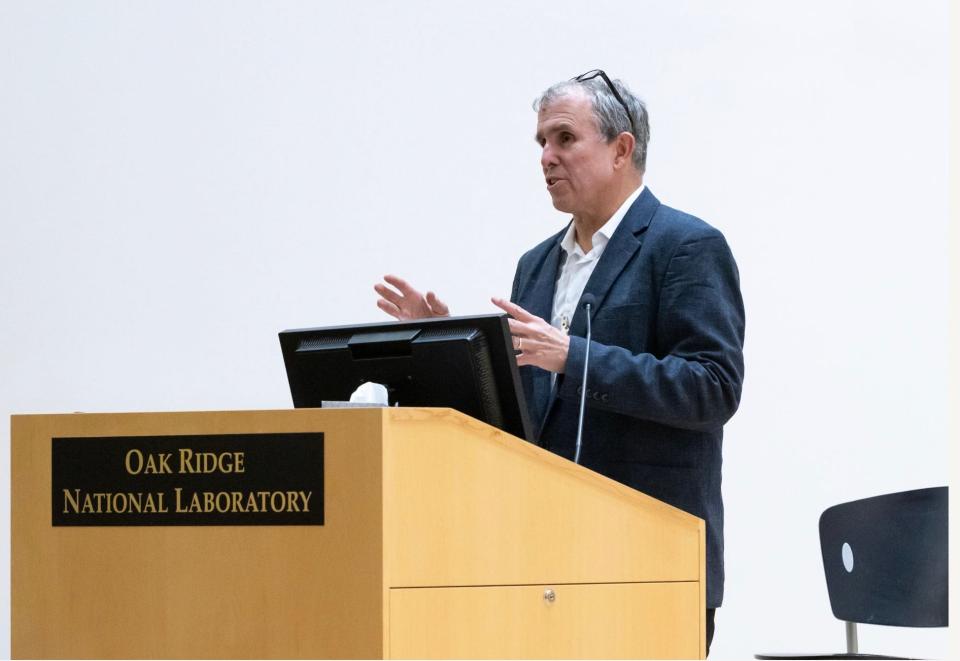
“In microscopy I feel we have all the tools we need to be able to visualize what’s happening from the molecular level on up inside of living tissues,” he said. “What we don’t have is a way to interpret those results. He added that scientists might be able to answer many more questions about how cells and their internal structures act “if we could just somehow be able to quantify what’s happening here.”
Betzig is a professor of molecular and cell biology at the University of California at Berkeley. He also serves as the Eugene D. Commins Presidential Chair in Experimental Physics, a senior fellow at the Janelia Research Campus and an investigator of the Howard Hughes Medical Institute.
His Ph.D. thesis at Cornell University and subsequent work at AT&T Bell Labs involved the development of near-field optics – an early form of super-resolution microscopy. Feeling frustrated, he left academia in 1995 to work for his father’s machine tool company, but returned 10 years later after he and Harald Hess built the first super-resolution single molecule localization microscope in Hess’s living room.
The tabletop invention, called photoactivated localization microscopy (PALM), led to Betzig’s Nobel prize. It helped solve the long-held problem, identified in the 1870s, that optical microscopy would never obtain a better resolution than half a wavelength of light.
Today, according to the Lind Lecture announcement, “Betzig continues to develop imaging tools to aid in biological discovery, including correlative super-resolution fluorescence and electron microscopy, 4D dynamic imaging of living systems with non-diffracting light sheets and adaptive optical microscopy to recover optimal imaging performance deep within aberrating multicellular specimens.”
Huntington’s disease, Ewing sarcoma
PALM was used to enable Betzig and his colleagues to see “the nuclei of two live cells with a protein that’s involved in Huntington’s disease,” an inherited condition in which human nerve cells in the brain break down over time, leading to physical and behavioral problems and death two decades later. Huntington’s disease is caused by a mutation in the gene for a protein called huntingtin. The defect causes the building blocks of DNA to repeat many more times than they normally do.
Using PALM, Betzig and others in 2016 imaged single molecule Huntingtin (Htt) protein dynamics in live cell nuclei in which aggregates of the mutant Htt proteins trapped the normal Htt proteins and halted these molecules’ functioning, allowing the disease to develop. He said that Ewing sarcoma, a childhood cancer, is also caused by a mutation in which proteins collect in sticky regions.
Because many diseases are due to changes in the binding coefficients of proteins, he said that he and his colleagues wondered if they could use knowledge from nanoscale imaging of molecules in live cells “as a pathway to drug discovery.” Betzig noted that after this “light bulb came on in his head,” he and three others decided to form a company called Eikon Therapeutics. The recently retired director of R&D at Merck was hired to head it.
According to the Eikon website, “We discover and develop new medicines by reimagining what is possible – inventing new technologies to bring to light quantitative information about the behavior of biological systems – to identify new targets and bring novel therapies to patients.”
Betzig said that advances in molecular biology will be made only by watching how proteins and other molecules move through living cells and bind to the cells’ internal structures. He showed a photo of NFL football players trying to either stop or open space for a running back carrying the football.
“Understanding the rules of the game requires seeing the players move,” he said.
His message to molecular and structural biologists is to reject “reductionist approaches where you grind up the cell and look at its parts. It’s like trying to understand the operation of a car engine from a random pile of engine parts. How can you ever understand life without looking at it live?”
'Work hard and focus'
He offered another message to young scientists desiring to do “great science.” From his experience working at Bell Labs and with Hess, he said that scientists who work alone or with one collaborator will be more successful if they “work hard and focus,” if they “think long and hard about a problem.” He noted that Richard Feynman, the famous physicist and Nobel laureate, told a colleague that his “problem isn't lack of intelligence – it’s lack of focus.”
Betzig said that modern science encourages people to work collaboratively in large groups. But he added, “When you’re alone, you can focus. When you’re working in a group, those interruptions can kill you.”
During his presentation on the 400-year history of the development of telescopes and microscopes of increasingly higher resolution, he remarked that many of the inventors that advanced the fields did so as a hobby. Their day jobs included selling cloth, composing music, practicing law and selling wine.
We're privileged to live when we do
He concluded his talk on an upbeat note. “We are really privileged as humans and scientists to live when we do. We live in a better time than anybody else has ever lived for many reasons. One of those is science. It is amazing that in just 400 years – such a small fraction of the time humans, life and the universe have existed—we’ve gone from almost no knowledge to so much knowledge of the universe and of life. It keeps accelerating and will accelerate even faster.”
For example, he said, we now know the observable universe has up to a million quintillion stars (1 followed by 24 zeros), roughly the same as the number of collective synapses (junctions between nerve cells) in the bodies of the world’s population, which exceeds 8 billion people.
S.C. Lind
His Lind lecture was well-received by an audience of ORNL staff. The S.C. Lind Lecture series, named after Samuel Colville Lind (1879-1965), is sponsored by the East Tennessee section of the American Chemical Society (ACS). It brings exceptional researchers to the area.
Lind, an internationally known physical chemist and radiochemist who worked with Nobel laureate Marie Curie, has been called the “the father of modern radiation chemistry.” He served as acting director of the ORNL Chemistry Division from 1951 to 1954. He received the East Tennessee Lectureship Award in 1953.
Born in McMinnville, he was the first native Tennessean to be elected to the ACS. The lectureship series was renamed in honor of his 50th anniversary as an ACS member.
As a result of his earlier research on radium chemistry, Lind had ingested a half gram of radium, enough in his body to set off alarms at ORNL. He died by drowning at age 85 while fishing in a boat below Norris Dam. The reason: he was almost deaf then and did not hear the alarms warning that TVA intended to open the dam and release huge amounts of water.
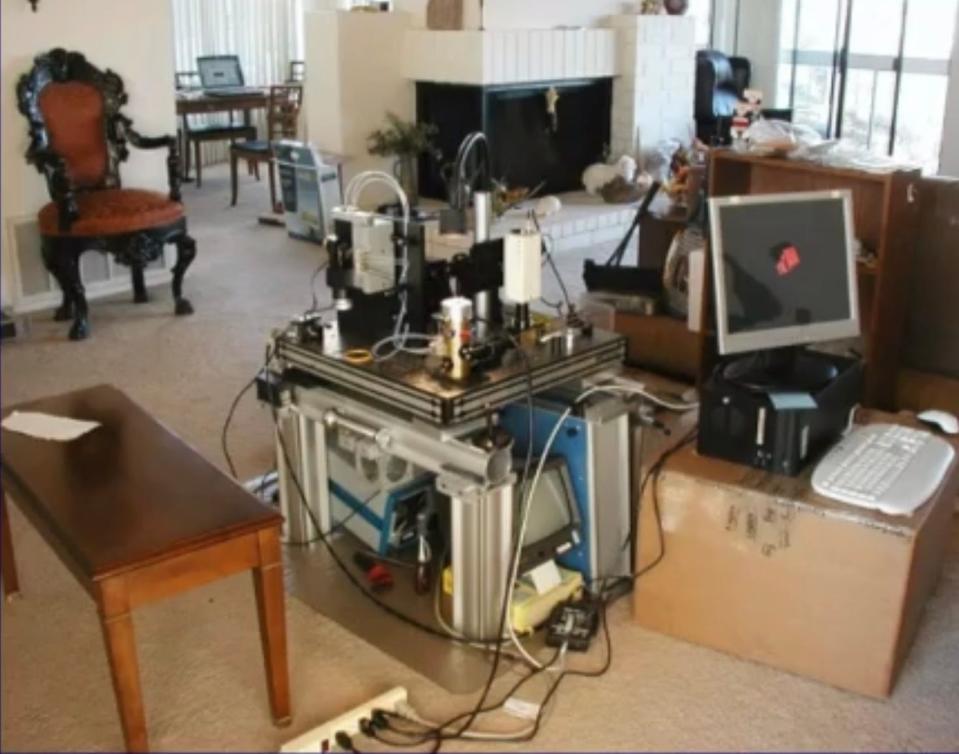
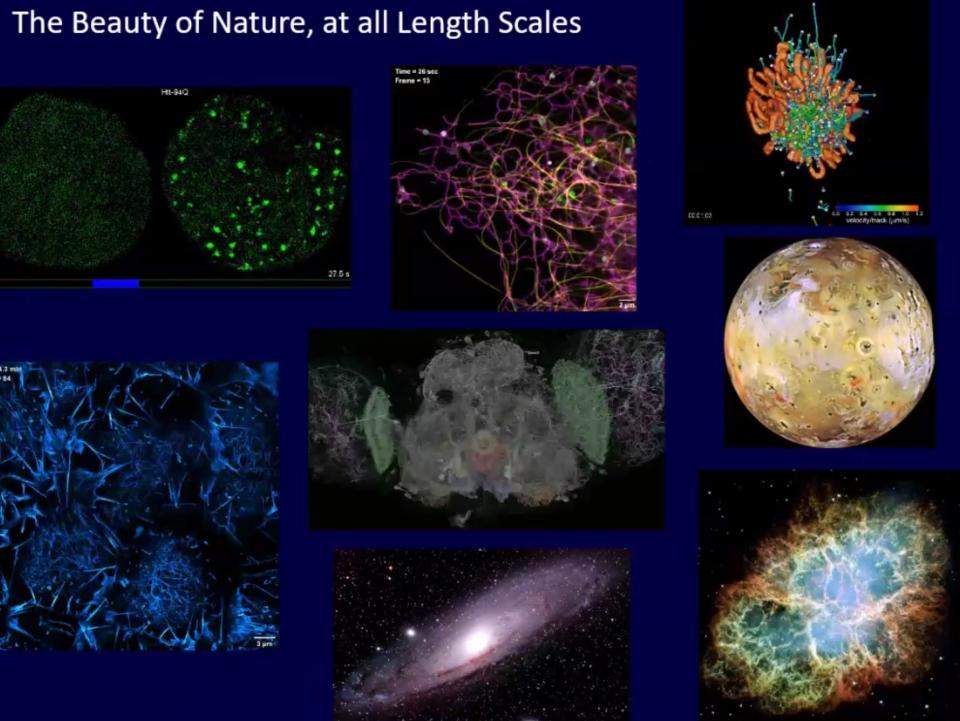
This article originally appeared on Oakridger: Could ORNL's supercomputer track how disease-causing proteins act?

